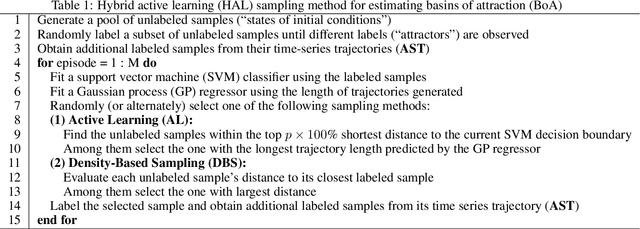A Data-Efficient Sampling Method for Estimating Basins of Attraction Using Hybrid Active Learning (HAL)
Paper and Code
Mar 24, 2020



Although basins of attraction (BoA) diagrams are an insightful tool for understanding the behavior of nonlinear systems, generating these diagrams is either computationally expensive with simulation or difficult and cost prohibitive experimentally. This paper introduces a data-efficient sampling method for estimating BoA. The proposed method is based upon hybrid active learning (HAL) and is designed to find and label the "informative" samples, which efficiently determine the boundary of BoA. It consists of three primary parts: 1) additional sampling on trajectories (AST) to maximize the number of samples obtained from each simulation or experiment; 2) an active learning (AL) algorithm to exploit the local boundary of BoA; and 3) a density-based sampling (DBS) method to explore the global boundary of BoA. An example of estimating the BoA for a bistable nonlinear system is presented to show the high efficiency of our HAL sampling method.
 Add to Chrome
Add to Chrome Add to Firefox
Add to Firefox Add to Edge
Add to Edge